Purchase to Pay Automation: The Ultimate Guide
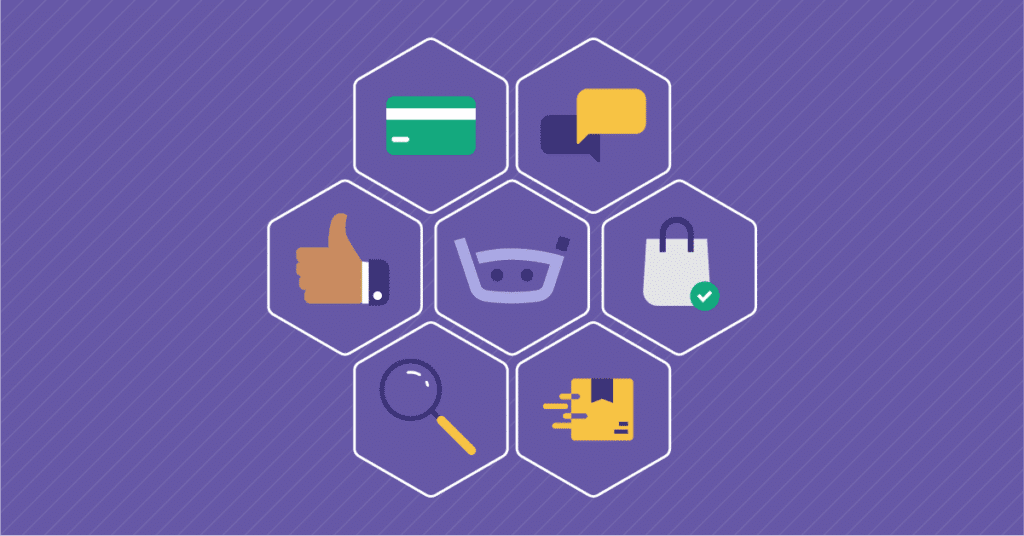
As the saying goes, you need to spend money to make money.
The procure-to-pay (P2P) workflow is the backbone of almost every business. In simple terms, P2P is the process of ensuring my company has the goods and services it needs to be able to serve its customers – spending money (buying material, goods, and services) to make money (selling final products to customers).
In more complex terms, P2P is anything but simple.
Every stage of the P2P process, from requisition to vendor payment, requires attention to detail, complex and often time-consuming manual and repetitive tasks, tight collaboration between teams, and strict internal controls. Every bottleneck, human error, broken process, workaround, and “this is how we’ve always done it” procedure is a potential source of delays, mistakes, and headaches.
In this podcast, Wayne Kimber, CFO of SymphonyAI, and Ben Murray, Founder of The SaaS CFO, discuss the need for CFOs to embrace digitization and automation to aid decision-making, develop people and technology, and grow their businesses.
In this article, I’ll discuss how I can optimize my P2P process: how the entire process works, how procure-to-pay solutions can help at each stage, and how I can tie all the automation solutions together to build an end-to-end P2P solution.
Let’s start by looking at the six stages of the P2P process and how we can automate them.
Stages of the procure-to-pay cycle
I run a medical equipment company that makes specialized prosthetics and appliances for patients with mobility issues. Our customers include health care providers, clinicians, hospitals, and other medical providers. Because our products are highly advanced, our supply chain sources advanced materials, engineering and design expertise, and medical consulting from suppliers worldwide. We also work with patient data, so we are subject to reporting and regulatory requirements related to privacy, safety, and quality of care. Everyone in our supply chain must be compliant with these requirements.
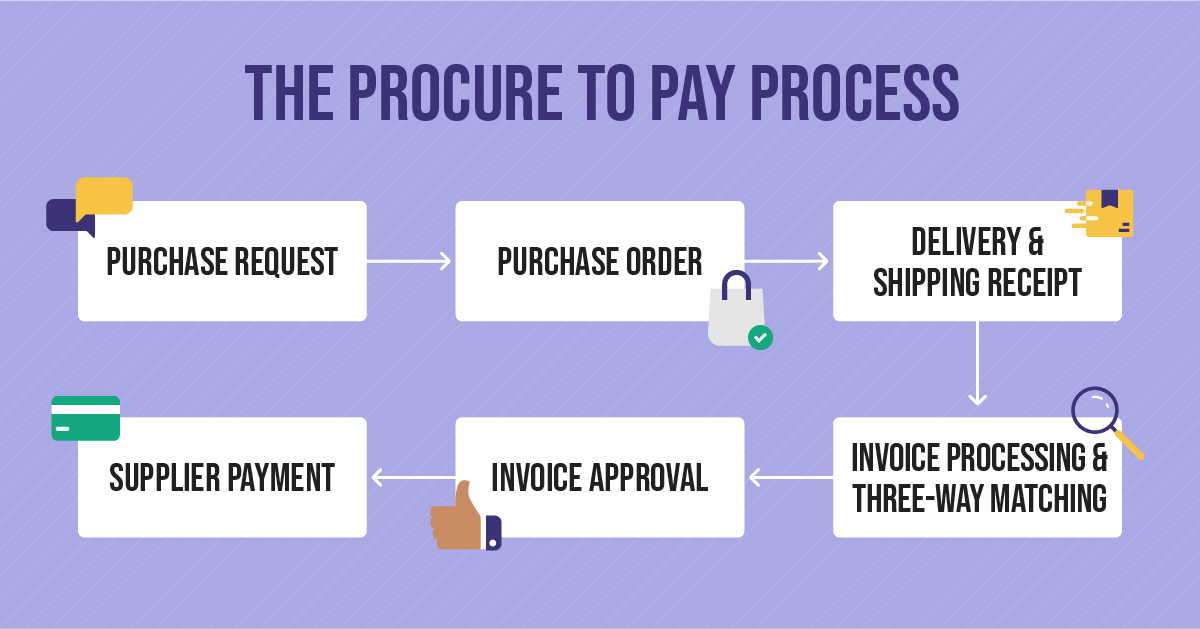
Our business needs help. Our current P2P workflow is a mishmash of manual and semi-automated processes, costing us money and putting us at risk of non-compliance with regulations. We’re looking at end-to-end P2P automation as a solution.
We’ve looked at our procure-to-pay processes and boiled them down to six main stages. Let’s look at each stage and how we can optimize it with automation.
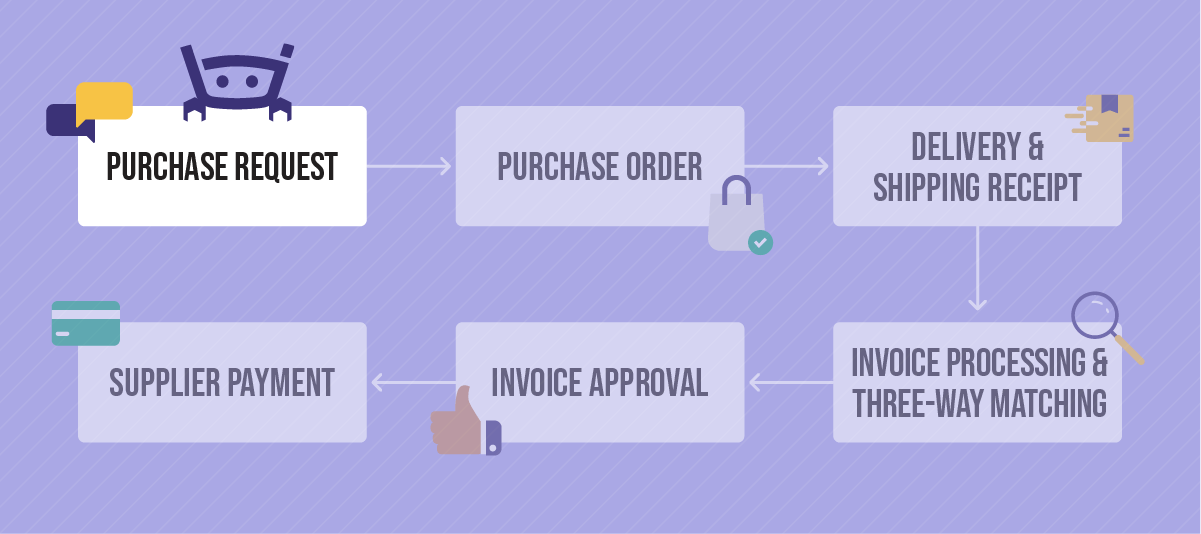
Stage 1: Purchase requisition
Our procurement process begins when our procurement department identifies the need for a good or service. Our design or fabrication teams usually communicate this need with a spec sheet or scope of work outlining the products or services we need. Procurement looks at our current vendors to see which one best fits the requirements, then contacts the selected vendors for a quote. Once we’ve chosen a vendor, procurement will create a purchase order (PO) and send it to the vendor.
We must select and add a new vendor if none of our current vendors can provide the good or service. This can be an extended process as we require a lot of documentation to ensure the vendor meets our needs and regulatory requirements.
How automation optimizes our purchasing process
A supply chain management or procurement solution manages vendor communications and documentation to streamline the requisition process. I can implement an automation solution to keep vendor pricing and terms up to date and use a vendor portal to simplify and centralize vendor communications. These benefits help our procurement team with contract management and make it easier for our AP team to keep vendors in the loop while processing invoices.
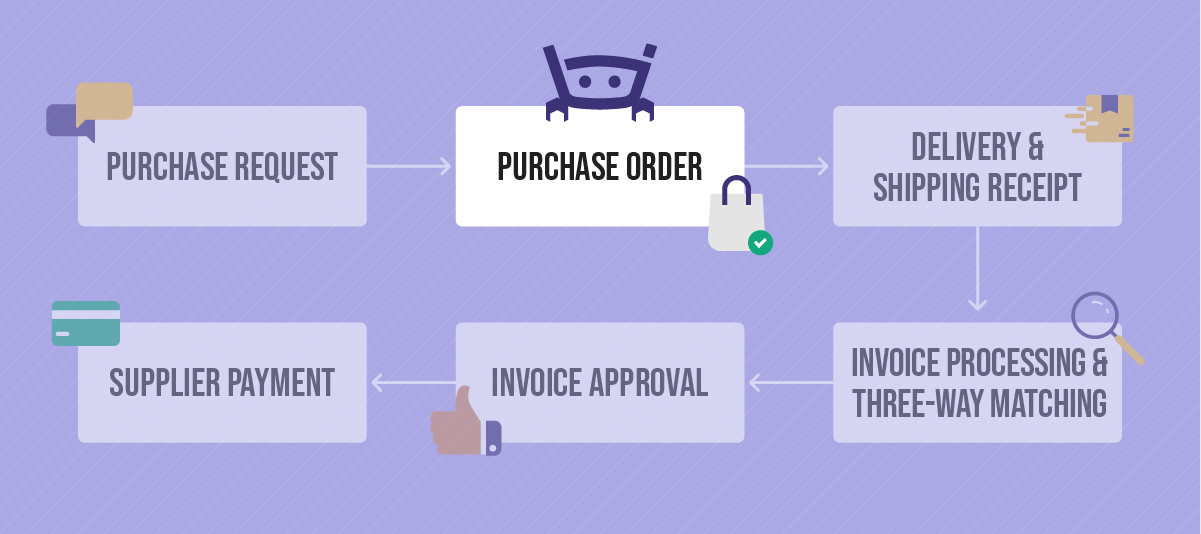
Stage 2: Purchase order
Once a requisition is approved, our procurement team creates a purchase order and sends it to the vendor to initiate the purchase. After sending the PO, procurement records the purchase and files the purchase order.
How automation streamlines the purchase order process
Suppose we use an enterprise resource planning (ERP) or purchasing system to manage our purchasing workflow. In that case, we can create purchase orders within the system, automatically send them to vendors, and store them electronically so we can easily access them later. Storing the POs electronically means they will be available to an ERP or accounts payable solution for three-way matching during invoice processing.
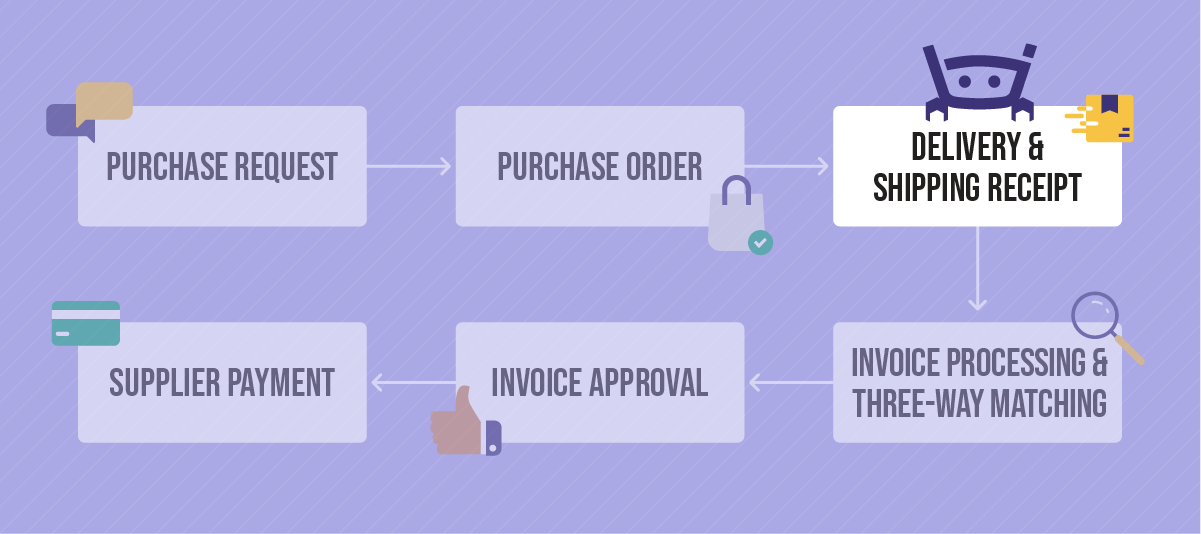
Stage 3: Delivery & shipping receipt
When a supplier delivers physical goods, we inspect them to ensure they meet the purchase order and are to spec. If the supplier is delivering services, we confirm the services match our PO and scope of work.
If there is a mismatch between what we ordered and the shipping receipt, we reject the delivery and ask the supplier to correct the mistake. If the delivery matches the receipt, we’ll approve the delivery, and the vendor can send an invoice.
How AP automation optimizes the delivery & receipt process
Paper documents can get lost, especially in the bustle of our shipping area. If we lose track of the paperwork, it can be impossible for us to confirm a shipment, so we need to go back to our supplier for clarification. An automation platform or ERP with optical character recognition (OCR) capabilities can automatically scan and digitize paper receipts, making it easy to track and access this information when we need to confirm shipments.
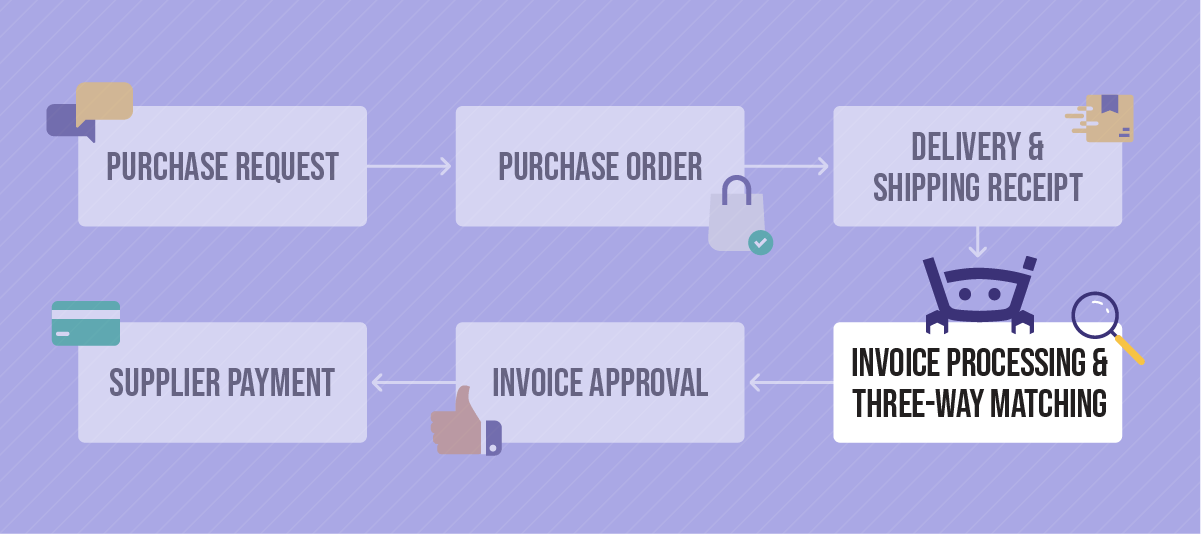
Stage 4: invoice processing & three-way matching
When we receive an invoice from a supplier, our AP team manually keys it in and assigns GL codes. Then they verify the invoice by matching it to the appropriate purchase order and shipping receipt. If there’s a mismatch, the team kicks the invoice back to the supplier for correction. If everything matches, they forward the invoice for approval.
This process can be complicated for us because we often process partial purchase orders and invoices. Data entry can be tricky for our AP teams. They need to make sure they’re matching the right line items, especially if the vendor descriptions are vague or one of the documents isn’t GL coded correctly.
How AP automation optimizes invoice processing & verification
An AP automation solution with OCR and machine learning capabilities can automatically scan, GL-code, and digitize paper and PDF invoices when they come in. We can also have all our vendors send their invoices to a central email address, which is a huge time saver for us. And best of all, once we enter the invoices, the automation system (or accounts payable ERP module) automatically performs two or three-way matching to confirm they’re correct.
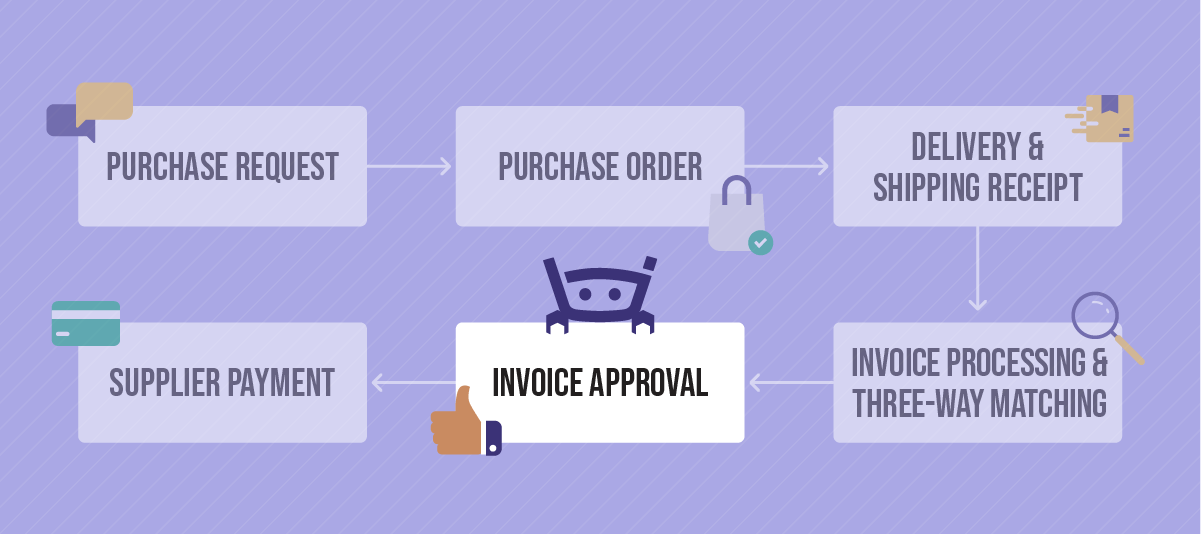
Stage 5: Invoice approvals
After our AP team processes and matches the invoices, they send them around for approval. Our accounts payable process is complicated. Because we custom-make each of our devices, we need to ensure that the right costs are associated with the right product. That means that one of our production managers signs off on each invoice before it goes to our controller for final approval. Our AP team usually knows which manager gets which approval, but sometimes when we’re busy, the process can get bogged down. We’d like a way to automate approval routing by project.
When the invoice gets final approval, our controller forwards it to the finance team for payment. If there’s a problem and they can’t approve the invoice, they kick it back to the AP team, who will try to resolve the issue and resend it for approval.
How automation improves invoice approvals
An accounts payable automation solution, or ERP system with AP functionality, can automate the invoice approval process and communications. For example, a platform can automatically forward an invoice to the correct approver based on preset criteria like invoice amount or vendor. Automation solutions also manage communications to ensure the approval is sent to the right person and automatically send reminders if the approver doesn’t sign off within a set time.
Once the invoice is approved, the automation system sends it for payment.
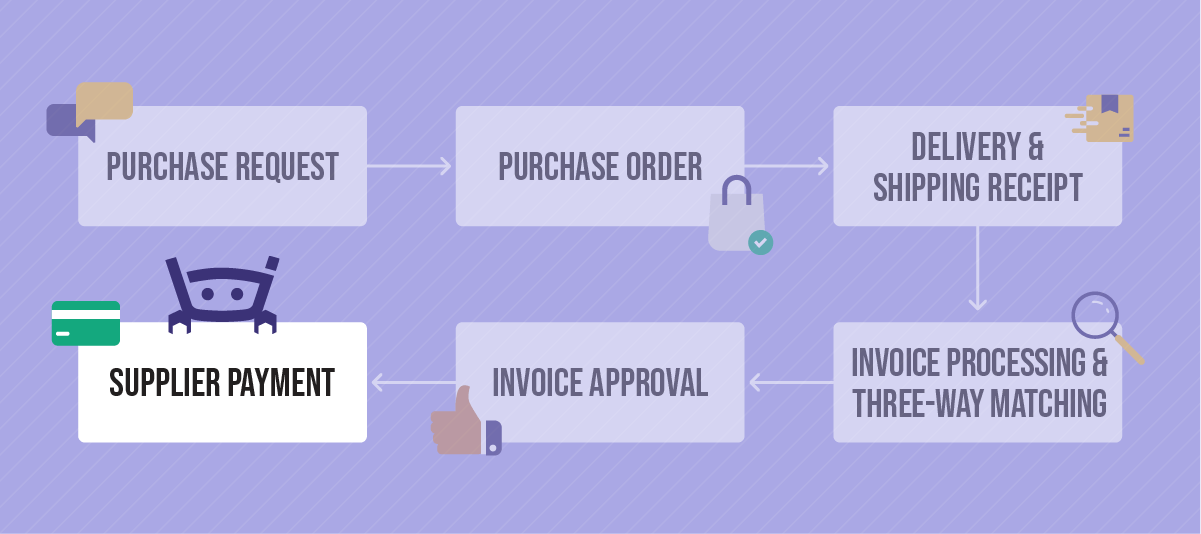
Stage 6: Supplier payment
Once the invoice is approved, our controller sends it to our finance team for payment. Finance pays the invoice based on our terms with each supplier and in whatever method the supplier likes best. For example, our smaller suppliers like to get EFT payments because they’re fast – best case scenario, they can have the money in their bank account in 3-4 days. In other cases, we may send a paper check or use a credit card.
Our international suppliers prefer wire transfers. Keeping track of all these different payment methods is a challenge for our finance team, as is keeping on top of making payments on time and tracking payments after they’ve been issued.
How automation simplifies the payment process
Digital payment methods like EFT transfers or virtual cards make life much easier. However, we’re still stuck using manual processes. Payment automation software, or an ERP with an integrated payment gateway, provides much more control and flexibility. Not only do they streamline and automate manual payment runs, but they also tie all our payment methods onto a single platform – and automatically assign each vendor’s preferred payment method.
Payment systems also sync with ERPs or AP automation platforms to ensure everyone works from real-time data on payment terms, bank accounts, credits, and discounts. This lets us stay on top of our payment data and manage our cash flow more efficiently.
Now that we’ve talked about P2P automation, we can optimize and streamline each step of the procure-to-pay process. Let’s take a wider look at the benefits of end-to-end automation.
Bringing it all together: the benefits of end-to-end P2P automation
It’s important to look at optimizing P2P as a shared goal between all stakeholders. We work closely with our suppliers and want to be part of their success. Taking an integrated approach turns P2P into a powerful strategic driver for our business strategy.
Not only does automation streamline our business processes, but it also provides us with a lot of information about our business. With automation, we can improve our payment times, improve the accuracy of our orders and invoices, and ensure our vendors are aligned with our business. It also helps us move to more of a source-to-pay model, where our AP team can get involved earlier in the process to help ensure pricing consistency.
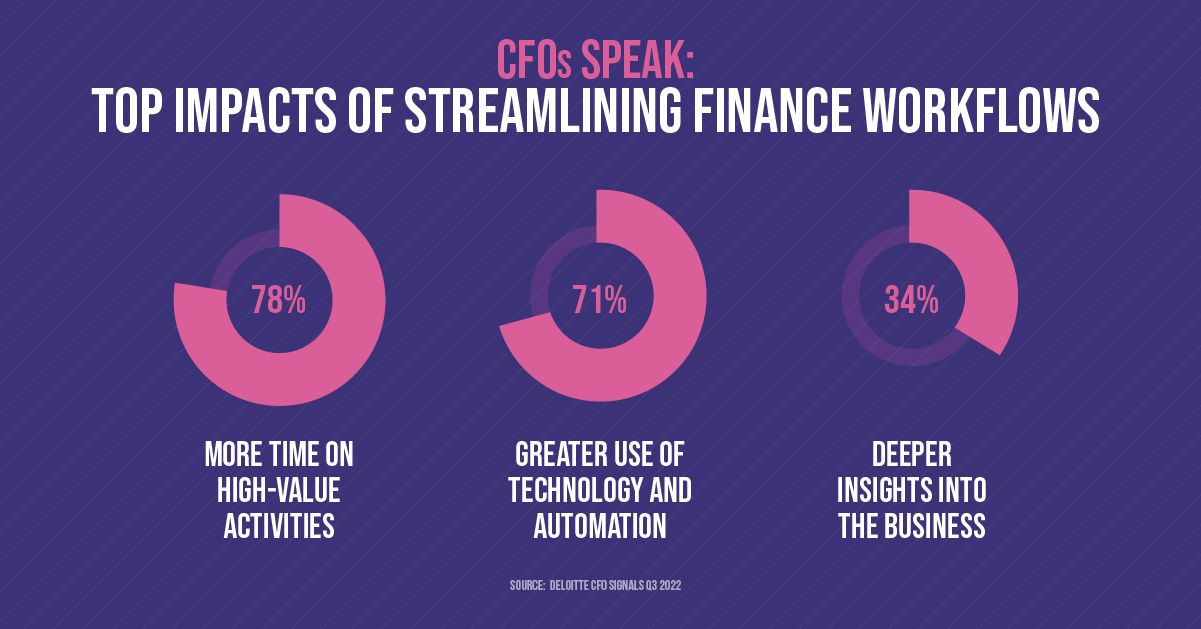
In 2022, Deloitte reported that almost half (49%) of finance leaders drive business transformation through automation. One-third (33%) reported they leveraged technology or an ERP, and 22% reported improving finance processes.
Here’s what that means to us.
Reduced processing costs
Of course, one big benefit of automation P2P is that it reduces our costs and improves cash flow. We can re-invest these savings in our company and people – a total win.
Better data transparency
AP automation solutions collect and share a huge amount of data with ERPs and accounting systems. We can use this data almost everywhere in our business. For example, knowing our costs by line item lets us improve the profitability of our products, most of which are custom-made and priced individually.
Less mess and better communications
We’re a busy company, and stuff gets lost. Moving all those invoices, receipts, and POs to digital versions saves a lot of paper and headaches. The same with centralizing communications – having a single email address for invoices and a vendor portal lets us keep on top of who said what. It’s a game changer for us and our suppliers.
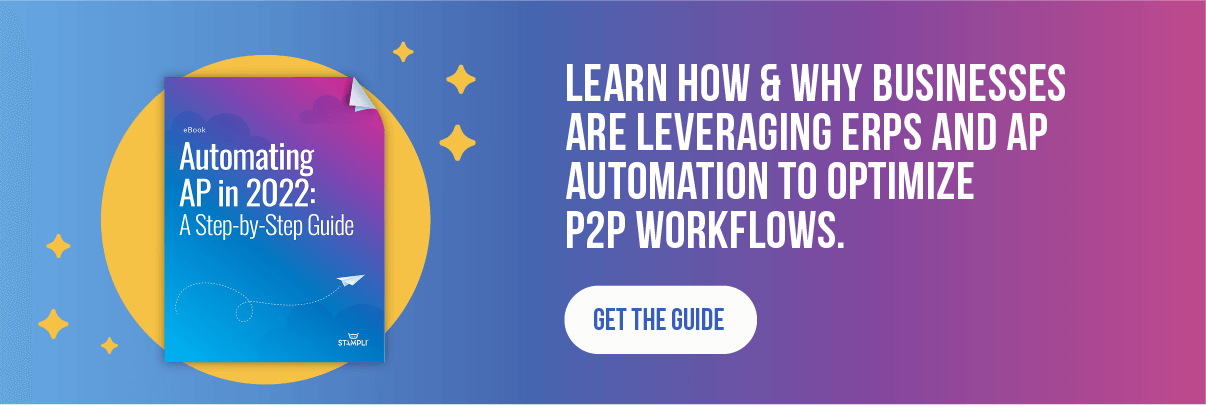
Simple implementation & seamless ERP integration
Many AP automation solutions can integrate with ERPs and accounting software. Mind you, not every solution is equal, but the best AP solutions make the process seamless and painless. And once the systems are integrated, we have a single source of truth for accounts payable across the company.
Improved internal controls
We’ve always struggled to maintain the segregation of duties. We’re a fairly flat organization, and people can take on a couple of roles, so sometimes it can be hard to see who did what. Automating AP changes all that. We can build our internal controls into our solution so no matter who does what, there’s a complete audit trail and record of communications.
With these benefits in mind, let’s discuss the different P2P automation solutions.
Next steps: deciding on a P2P automation solution
When it comes to choosing the right solution for P2P process automation, you’ve got plenty of options. Here’s a simple plan you can follow:
Start by looking at your current workflows
Begin by examining how you buy and pay for products and services today. Ask questions like:
- How do we select and onboard new vendors?
- How do we initiate and approve a purchase?
- Who performs three-way matching of invoices, receipts, and POs?
- How do we enter and GL code invoices?
- Who approves payments?
- How do we track payments and DPO?
and finally:
- How much does all this cost?
Once you’ve mapped out your current P2P workflow and what it costs, you can look at possible automation solutions.
Assess your current IT infrastructure
What are you using today for an accounting solution or ERP? Many ERPs offer their own P2P automation functionality through modules or third-party integrations. If you’ve already got an accounting solution, match your current situation and needs against its capabilities and see if they line up.
It’s also worthwhile to look at third-party integrations optimized to work with your existing ERP. For example, we use Sage Intacct ERP and chose Stampli, a Sage Tech Partner – Plus, as our Accounts Payable automation solution.
If you don’t currently have an ERP or accounting solution, or if you’re thinking of changing the one you have, carefully consider your options. While an ERP can provide a seamless end-to-end P2P automation solution, a standalone procure-to-pay software or hybrid ERP/integrated solution better fits your needs.
Once you’ve decided on a solution, it’s time to automate your workflows.
Automating P2P workflows
Automating your P2P workflows depends on which solution you’ve chosen. Some ERP solutions, like SAP S/4HANA, may require setup, implementation, and coding before automating your processes. Other AP solutions, like Stampli, can be implemented in days without changing your internal processes or IT infrastructure.
Once your solution is in place and operational, you can continue to optimize your P2P workflows by working with vendors to migrate them to new payment methods, implementing data analysis and reporting, and redeploying team members to higher-value tasks.
Stampli: Automate P2P without reworking your ERP
Stampli is for businesses who want the benefits of P2P automation, but who don’t want to rework their ERP or change existing workflows. As the industry leader in Accounts Payable Automation, Stampli supports native functionality for over 70 ERPs, including AP automation for Oracle Netsuite, Sage, Microsoft, SAP S/4HANA, QuickBooks, and others. Best of all, Stampli deploys in a matter of weeks, not months, with no coding or IT development needed.
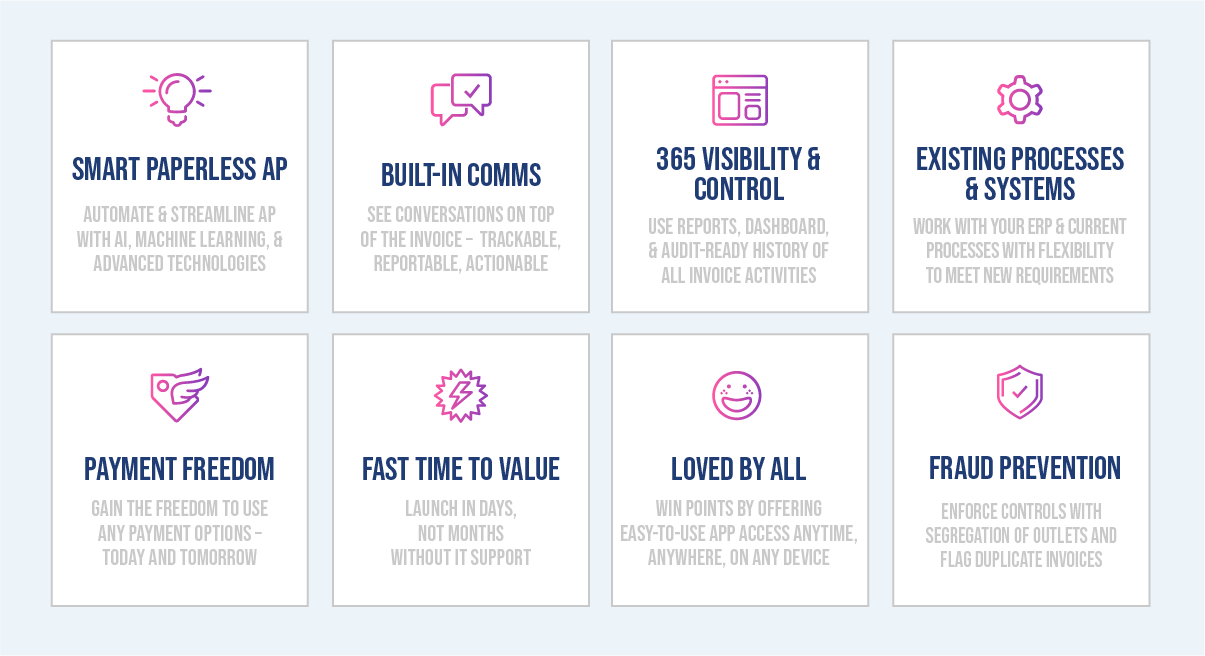
Stampli’ Procure-to-Pay software consolidates all communication, documentation, and workflows related to procurement, accounts payable, and payments in a single platform, providing complete visibility and total control. The platform is easy to learn and use with Billy the Bot™ automating tasks such as capture, coding, routing, and fraud detection. Stampli also offers additional integrated products, including Stampli Procurement software, Stampli Direct Pay, Stampli Card, Stampli Advanced Vendor Management, and more, for increased efficiency and better spend management.
Here are just a few of the reasons businesses love Stampli for procure-to-pay automation:
- Invoice processing: Automate invoice capture, coding, approvals, and more to make AP more efficient and accurate.
- Extended business-hours customer support: Our team of AP & ERP experts is available with less than 60-second response times to ensure you get the most out of Stampli.
- Billy the Bot™: Advanced AI that adapts to your unique AP processes and business structure to automate manual tasks and eliminate manual work in your SAP ERP.
- Fast onboarding support: Your dedicated Customer Success team member will help you set up Stampli to match how you already do business.
- Advanced Vendor Management: Manage vendor onboarding, information, and documentation to strengthen relationships and maintain compliance.
- Multi-subsidiary support: Process and pay invoices across companies, offices, departments, or locations in a single place.
- Insights: Gain instant visibility into invoices, employee productivity, and AP processes with powerful analytics and reporting tools.
Contact Stampli today to set up a free demo and see how P2P automation can transform your business!